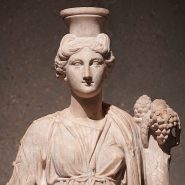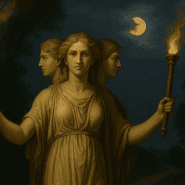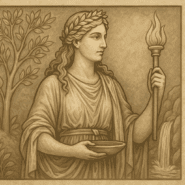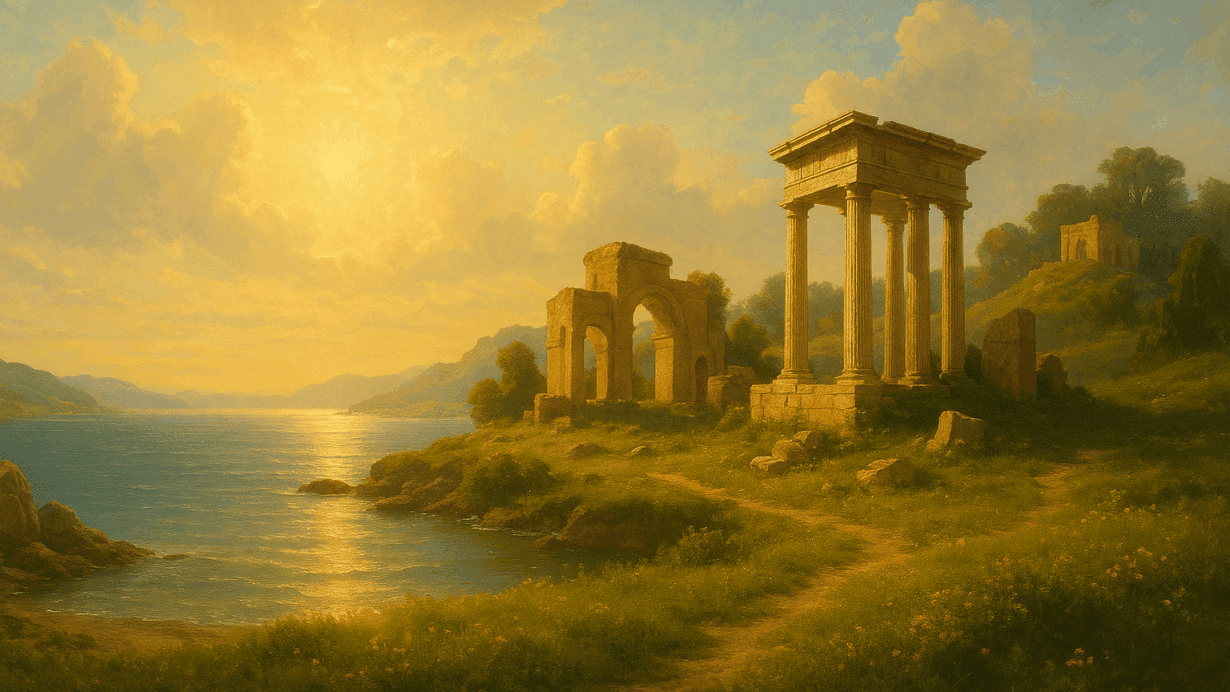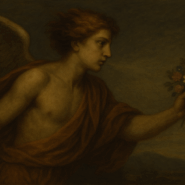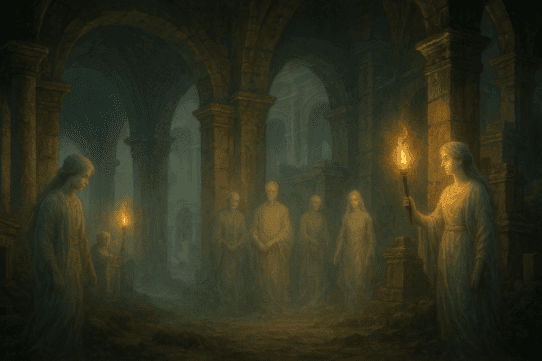QUICK SUMMARY
The Isles of the Blessed were Rome’s vision of a perfect afterlife: a shining paradise reserved for heroes, poets, and mortals granted extraordinary favor by the gods. Beyond the storms of Oceanus, they offered eternal spring, peace, and joy.
In Roman mythology, the journey of the soul after death could lead to many destinations: the misty Asphodel Fields, the punishing depths of Tartarus, or the wandering shadows along the rivers of the Underworld. Yet above all these realms stood a place of extraordinary wonder and serenity: the Isles of the Blessed, known also as the Fortunate Isles.
This paradise was not the common destination for human souls. Only those who lived with exceptional virtue, bravery, or divine favor could hope to reach it. Wrapped in gentle breezes and golden light, the Isles embodied the Roman ideal of eternal reward—a realm where toil ceased, seasons remained forever mild, and happiness was woven into the very air. More than a mythic landscape, they were a reflection of Rome’s admiration for greatness, heroism, and the legacy of noble deeds.
The Journey Beyond the World
While much of the Roman afterlife lay beneath the earth, the Isles of the Blessed existed beyond the horizon. Ancient poets described them as lying far across the western sea, past the boundaries of Oceanus, in a region touched by neither storm nor sorrow.
To reach the Isles, the soul first passed through the traditional stages of the Underworld: the crossing of Acheron, the judgment of Minos and his fellow judges, and the evaluation of one’s deeds in life. Only those who had achieved extraordinary merit or divine approval were granted passage. For some, this privilege was earned through noble sacrifice or the preservation of Rome itself; for others, it came from a life lived with profound moral excellence.
A Realm of Eternal Spring
Descriptions of the Isles vary, but all share one essential truth: they were a paradise untouched by the hardships that shaped mortal life. Their defining feature was the eternal spring that blanketed the islands in flowers, fresh breezes, and soft sunlight.
The landscape was imagined as:
- Meadows filled with lilies, primroses, and blossoms that never faded
- Streams of crystal water winding through green valleys
- Gentle hills bathed in golden light
- Groves where heroic spirits conversed in peace and reflection
This perfect climate reflected the Roman belief that virtue, once tested and proven, deserved an everlasting reward free from toil and suffering.
Who Could Enter the Isles of the Blessed?
The Isles were not meant for ordinary souls. Admission required a life that shaped history, inspired generations, or upheld divine justice. Among the spirits said to dwell there were:
Legendary Heroes
In Roman adaptations of Greek myth, great heroes such as Achilles, Diomedes, and Peleus found peace in the Isles. They had endured struggle, loss, and war, and their heroic deeds earned them eternal respite.
Poets and Those Loved by the Muses
The Romans deeply valued poetry as a bridge between the mortal and divine worlds. Poets who honored the gods, preserved great deeds, and elevated human understanding were believed to find favor here.
Righteous Rulers
Some tradition held that just kings and noble statesmen—those who ruled with fairness, piety, and wisdom—might be welcomed to the Isles. Their governance reflected divine order, making them worthy of eternal harmony.
The Twice-Born and Thrice-Born
Certain philosophical traditions claimed that souls could be reincarnated. After three virtuous lifetimes, one might finally earn entry to the Isles of the Blessed. This idea, though not universal in Roman belief, reflected a spiritual path toward perfection.
The Isles in Roman Literature
Virgil’s Aeneid remains the most influential Roman source describing the Isles. When Aeneas journeys through the Underworld, he witnesses the realm of the righteous, bathed in golden light and filled with the spirits of heroes. This scene became the foundation for later Roman and medieval visions of paradise.
Other Roman writers expanded the vision, imagining:
- Gentle music drifting across the sea
- Banquets celebrating virtue
- Calm discussions between philosophers and warriors
- Fields where heroic spirits engaged in sports and friendly contests
These details served both as poetic imagery and moral instruction, demonstrating the rewards of living honorably.
A Contrast to Elysium
The Isles of the Blessed were often associated with, or sometimes even equated with, the Elysian Fields. Yet Roman writers distinguished between the two:
- Elysium lay within the Underworld, a realm of light and joy for the virtuous.
- The Isles of the Blessed stood beyond the mortal world entirely, in the far western reaches of the earth.
In some traditions, Elysium was the first reward, while the Isles were reserved for the most exceptional of all souls—those who transcended even heroic greatness.
This distinction emphasized Rome’s belief that goodness could exist in degrees, each worthy of different kinds of honor.
The Geography of Paradise
Roman poets depicted the Isles as a chain of islands bathed in warm breezes and perfumed air. Some described them as:
- Located near the Canary Islands
- Part of a mystical western edge of the world
- Surrounded by calm seas that reflected an unsetting sun
The idea of a far-western paradise resonated with many ancient cultures. For Rome, the west symbolized the boundary between life and mystery, a place where mortals ended their earthly journey and entered the unknown.
The Moral Message
Myths of the Isles of the Blessed were not merely stories. They served as reminders that:
- Virtue was enduring
- Justice extended beyond life
- Heroism, loyalty, and honor shaped the soul’s fate
- A well-lived life could transcend mortality
This moral dimension echoed through Roman culture, aligning with the ideals of duty (officium), loyalty (fides), and moral excellence (virtus). The Isles became a symbol of Rome’s highest aspirations: the belief that extraordinary character should be rewarded with extraordinary peace.
Influence on Later Traditions
The concept of a blessed paradise beyond the mortal world influenced medieval Christian thought, Renaissance art, and modern depictions of the afterlife. Elements of the Isles appear in:
- Dante’s vision of Paradise
- Renaissance paintings of mythic western lands
- Romantic poetry describing faraway golden isles
- Fantasy literature and video games imagining peaceful eternal realms
Though the Romans inherited the idea from earlier cultures, they reshaped it into a distinctly Roman expression of reward, honor, and remembrance.
A Vision of Eternal Peace
The Isles of the Blessed represent the Roman hope that greatness does not end with death. For Romans who believed in destiny, divine favor, and the legacy of one’s deeds, the Isles were the ultimate affirmation that the soul could rise beyond suffering to a realm of endless joy.
In this way, the Isles stand as one of the most inspiring visions in Roman mythology—reflecting a worldview where virtue was not only admired, but eternally celebrated.
